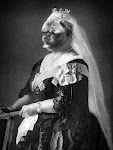Presumably, when a concert featured a piano or violin concerto in, let's say, 1760, the soloist was the composer and had written the piece for himself. Very likely, the composer/soloist would also conduct the orchestra. Such was the case of Mozart who wrote most of his early concerti (1-13) for himself. After the 13th, written in 1783, Mozart began to compose piano concerti for others to perform while a conductor led the orchestra.
One of the reasons for the change was that the concerto was growing in stature and complexity. No longer a sweet trifle created to amuse, the concerto was assuming its role as a major musical form, second only to the symphony in importance. Earlier concerti started with an orchestral introduction followed by the solo’s entrance. This was either alone or with minimal accompaniment. The orchestra would sometimes echo a theme or close a phrase and then bring the movement with a final tutti. The orchestra was usually a small chamber ensemble of strings and maybe a few winds. By 1780, the era of Mozart’s later piano concerti (and certainly by this concert’s featured work his 25th Piano Concerto in C major K 503), the concerto had reached symphonic proportions. The orchestra had grown too with brass, expanded winds and strings plus tympani.
It takes a coordinated, yes even gutsy, pianist to solo and also conduct such a symphonic concerto. This evening’s Kansas City Symphony guest conductor, Jeffrey Kahane, is not only a superb pianist (a Van Cliburn Competition finalist) but also a skilled conductor of orchestras large and small (Colorado Symphony, Los Angeles Chamber Orchestra) and thus well equipped for the challenge. Kahane conducts with economy of motion, using fingers, nods and eyes to get what he wants out his forces, allowing him to equally concentrate on the demanding solo part.
Kahane’s Mozart 25th was a bit on the leisurely side yet a smooth, romantic reading befitting this most majestic of concerti. Not a spectacularly flashy concerto, Kahane highlighted the heroic nature of the work, especially in the dramatic opening Allegro maestoso. The long lined central Andante was poetic but could have used a bit more contrast from the first movement; attributed to the slower tempo of the opening movement. There was no doubt of the conviction of the performers, however, with the Kansas City Symphony winds in their usual fine form.
Instead of a skittering, lightweight Rondo, Mozart treats us to a most symphonic finale. Although still discernable as a rondo form, the movement has all the organic elements of a tightly argued sonata. Kahane relished the more brilliant writing for the solo in this movement as much as he milked the long, flowing lines of the Andante. A well balanced and powerful conclusion to this marvelous work.
Throughout the concerto, Kahane’s pianism was more expressive than precise (fine with me) perhaps owing to his split attention to the largish forces and demanding score. A most fine performance, with nary a missed entrance or miscue from the orchestra, good balance but marred by some weak string passages, a minor flaw in a sparkling jewel of a performance.
Although I had my heart set on the previously announced program with Asher Fisch conducting the Mahler “Blumine” movement and the Brahms/Schoenberg Quartet in g, I am sure the capacity audience better enjoyed the big and lush Rachmaninoff Symphony # 2 than the more unfamiliar works.
Again Kahane led a tad leisurely performance, but not to the point where the work became a bloated barge. It is fitting to remember that for many years this work was performed in a radically cut version of about 35 minutes. The first complete recording was not made until 1968.
Kahane and the orchestra were at their best in the brooding, mysterious and oh-so-Russian first movement, emphasizing the soaring themes and Orthodox chant inspired moods. The subtle shifts in meter and tempo kept the long movement moving, permitting us to luxuriate in the bounty of melody and passionate passages just long enough.
The vigorous scherzo must have woke a few snoozers; the big cymbal and bass drum crash that signals the entrance of the second theme and central part of the movement caused quite a burst of chatter and murmuring among the audience. The end of the scherzo, with its reference to the Latin Dies Irae (day of wrath) chorale could have been a bit more chilling, which is about the only little quibble I have here.
The big adagio is a feast of romantic melody; one can almost see the torrid images of lovers straight from the cover of Harlequin Romances. Song writers love to pluck themes from Rachmaninoff’s works for popular songs, and the main theme of this movement is no exception. Kahane’s slower tempo worked against him here and the movement became a bit slack with some weak sister climaxes. The English horn, violin and clarinet reveries were certainly highlights of the movement as was the lovely string passage with horn obbligato (how the horns have improved over the last 5 years) about ¾ through the movement, ending in a transcendent chord with soft and sweet flute and viola figures floating above. This was a movement made up of some fine moments, but just not jelling to a perfect whole.
As if dispelling all the Russian gloom and soulful passion, the finale is an Allegro Vivace Italian tarantella. The movement certainly has no shortage of fine melodies, but now they all spring from sun and light. The motives from previous movements make a final appearance to sum the big symphony up nicely. Kahane and the orchestra brought the work and the demanding program to a vibrant and exciting close.
Subscribe to:
Post Comments (Atom)



No comments:
Post a Comment